#geb ennead
Text

Au where Nut remembers that she has a son.
+

#like your previously nice and kind and loving son goes entirely bonkers and seemingly locks his wife who is also your daughter up#and mistreats his son and you don't go to talk to him for the sake of your daughter and grandson is not for his?#and Seth literally turned to ashes in the sky and Nut didn't give a shit#and he was r*ped on the ground and Geb didn't give a shit#wtf#btw I drew these when ennead was still good I've dropped it now it's trash now#ennead#ennead manhwa#ennead mojito#seth ennead#nut ennead#geb ennead#i draw stuff
19 notes
·
View notes
Text
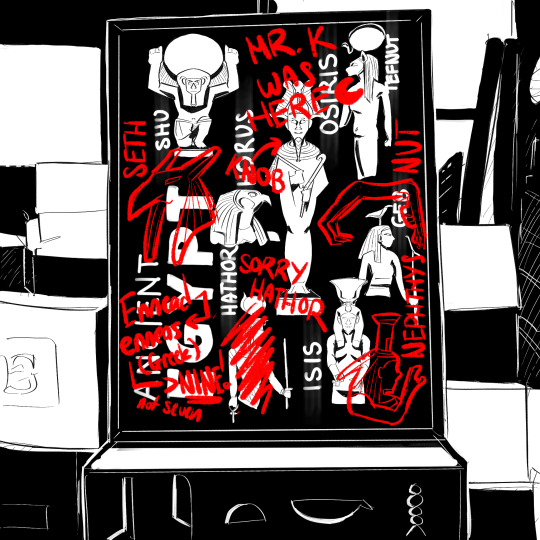
moon knightober day 17 - ennead
#i hope this is legible lol#ennead#horus#osiris#shu#geb#isis#tefnut#hathor#seth#nut#nephthys#that’s a lot of names#moon knight#moon knightober 2022#moonknightober2022#mktober2022#moondodrawing
158 notes
·
View notes
Text
My masterpiece, “The messy leafs on the Ennead’s Tree.”
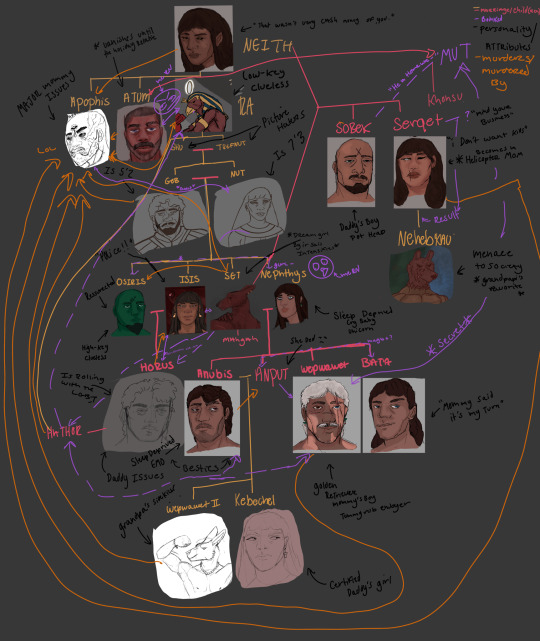
I’ll make a part two with all the lore when i’m not dying of a cold.
#ennead#set#nephthys#isis#osiris#RA#geb#nut#Serket#Sobek#Anubis#wepwawet#bata#mahgah#atum#apophis#mut#khonsu#family tree#personal canon#personal art
4 notes
·
View notes
Text
DIGITAL ALTAR: GEB
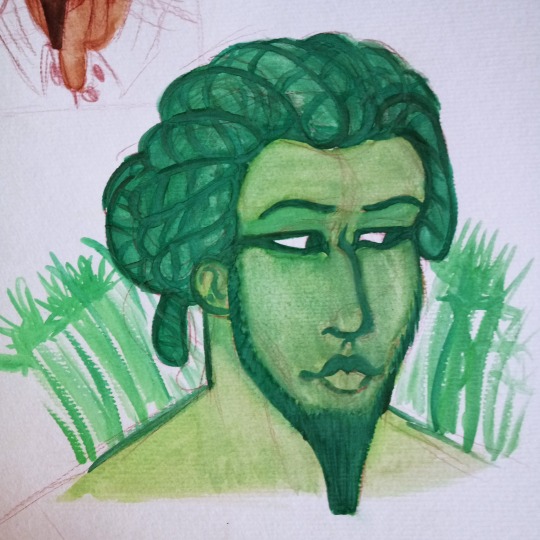
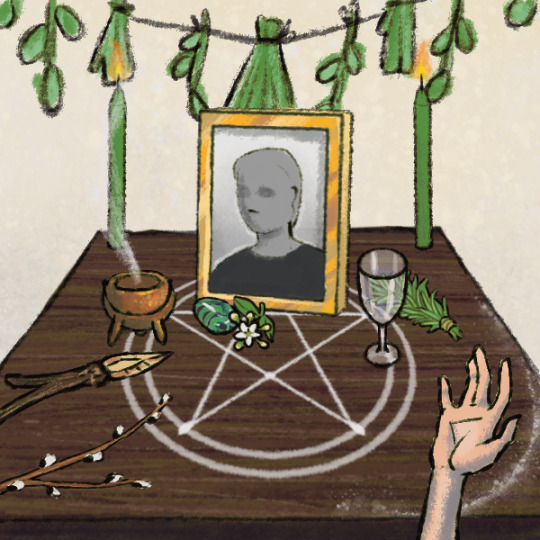
"This is for you Geb, Son of Shu and Tefnut, husband of Nut and father of snakes, god of healing, vegetation and fertility.
We ask of you to grant us the strenght to heal from those who have hurt us, to grow and to live and to flourish as the scars in our body and mind fade.
We thank you for your guidance and offer you this prayer as an act lf devotion, along with our broken mind that you chose as an avatar."
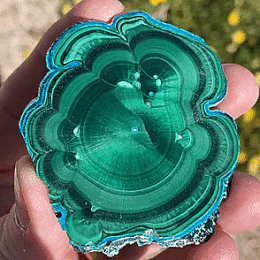
Altar Sketch picrew by Camadae
Art by us.
#digital altar#deity work#deities#geb deity#geb the ennead#the ennead#deity worship#digital altar blog#witchblr#witch tumblr#deity tumblr#kemetic pantheon#kemetic gods#geb#Spotify#prayer
6 notes
·
View notes
Text
the egyptian gods
MA'AT: the essence of harmony and balance
in the beginning, well, there were a lot of different beginnings,
AMUN/AMUN-RA: god of the sun and air, supreme king of the gods in some periods. some stories say that he created himself and then everything else in the universe
ATUM: sometimes considered another name for Ra, but when separated he represents the evening sun. he was the first of the Ennead to emerge from Nu, and was the supreme ruler of the gods, and creator of the universe and human beings
RA/RE: when separated from Atum, he represents the midday sun, but other stories say that his aspect changes as he advances his sun barge across the sky. also considered the supreme ruler and creator of the universe. later merged with Amun as he rose in popularity
PTAH: another creator of the universe, Ptah was lord of truth, and the patron god of sculptors and craftsmen (since he was considered to have sculpted the earth). he created the first mound of earth from Nu by imagining it in his heart and breathed life into things with his voice
KHNUM: said to have created everything on his potter's wheel. in a different story he created humans on his potter's wheel then raised them up to the sun so that Ra could breathe life into them
NEITH: a war and funerary goddess, she created all things from her innards. she invented birth, therefore considered the "mother goddess" and closely associated with life and living things
MUT: emerged from Nu and gave birth to the world on her own, or in other stories was the wife of Amun. she was a goddess of protection, guarding humans in life, and against demons in death
MEHET-WERET: celestial cow goddess that emerged from Nu and gave birth to Ra at the beginning of time. goddess of water, creation, and rebirth
then under Atum/Ra creation stories, there were the first gods, called the Ennead,
SHU: the primordial god of air, he was born from Atum/Ra with his sister Tefnut to create the world. it's said that after bein gone for so long, Atum/Ra sent the eye of Ra to search for them, and his tears of happiness at having them returned became humans
TEFNUT: the sister and wife of Shu, she was the primordial god of moisture and rainfall
NUT: child of Shu and Tefnut, she represented the sky, but her relationship with her brother Geb disturbed Atum/Ra so he pushed her high above Geb, decreeing that she could not give birth on any day of the year. however, Thoth then gambled with Iah (or Khonsu) winning five days of moonlight he transformed into days. On those five days, her five children were born
GEB: god of the earth and growing things
OSIRIS: child of Nut and Geb, he was lord and god of the underworld and afterlife. he was said to be the first god to die, after being killed by his brother Set, wherein Isis then resurrected him and they bore Horus.
ISIS: child of Nut and Geb, she was the goddess of the moon, healing, fertility, and magic
NEPHTHYS: child of Nut and Geb, she is the twin sister of Isis and wife of Set. she is considered a goddess of funeral rites, darkness (not in an evil sense), and protector of women.
SET/SETH: child of Nut and Geb god of war, chaos, and storms. although he was the first murderer, he was considered a necessary balance to the good of Osiris. he killed Osiris to usurp his throne, only to later be usurped by Horus.
However, sometimes Set was replaced with Horus in the Ennead,
HORUS: technically there were two Horuses, Horus the Elder, who was a child of Nut and Geb, and Horus the younger, who was the better known Horus. however, they ended up merging into one deity, a god of the sun, sky, and kingship
under the Amun (and sometimes Ptah) creation myth(s) there was the group called the Ogdoad, including Amun and
AMUNET: the female counterpart of Amun, together they represented forces unseen, including the wind and air
KEK: the god of the hours before dawn, he guided the sun barge of Ra from the underworld to earth
KAUKET: the female aspect of Kek, she represented the hours after sunset, and guided the sun barge of Ra into the underworld. Together these gods represent darkness (but not in an evil way)
HEH AND HAUHET: often not separated in any meaningful way, these two were the gods of infinity, eternity, and time
NUN AND NAUNET: personification of the primordial waters, from which everything was created. Naunet is only ever referenced when it comes to the Ogdoad
However, when Amun became revered as a god of creation, him and Amunet were sometimes replaced by
NIA AND NIAT: gods of the void
so then the rest of the gods,
THOTH: advisor of Atum/Ra, he was the god of wisdom, writing, and truth, and was associated with the moon. sometimes he is the child of Atum/Ra, other times he is the son of Horus. he gave humanity the gift of language and marked the passage of time
SESHAT: consort of Thoth, she was the goddess of writing, books, and measurements
ANUBIS: son of Nephthys and Osiris, he was the god of the dead and associated with embalming. he leads the souls of the dead to the Hall of Truth and weighs their heart to determine if they were good or evil
KABECHET/QEBEHT: daughter of Anubis and a funerary deity. she provides cool, pure water to the souls awaiting judgement in the Hall of Truth
BASTET: daughter of Ra, although her image has tempered over time, Bastet was often considered a defender of pharaohs and the hearth. goddess of cats, women, and fertility
SEKHMET: sister of Bastet, she was goddess of destruction, justice, and desert winds. after Ra became tired of the sins of humanity, he sent Sekhmet to destroy them. she ravaged the land until the other gods implored Ra to stop her, where he took beer dyed red (to emulate blood) and left it at Dendera. when she drank it, she fell asleep and woke as the benevolent goddess Hathor
MAAHES: solar god and protector of the innocent, sometimes the son of Bastet, sometimes Sekhmet
HATHOR: goddess of joy, celebration, love, women, drunkenness, and sometimes animals. in some stories she is the wife of Horus the elder, in some Horus the younger, and in some Ra
MA'AT: embodiment of the principle of ma'at, she was the goddess of truth, justice, and harmony
KHONSU: the son of Amun and Mut, god of the moon and healing
MONTU: a god of war and the vitality of pharaohs, he was later replaced by Khonsu as a child of Amun and Mut
TENENIT: goddess of beer and brewing, consort of Montu
HEKA: patron god of magic and medicine, but was also said to be present at the creation of the universe
HU: god of the spoken word, personification of the first word Atum/Ra ever spoke. represented the tongue
SIA: personification of perception and thoughtfulness who represented the heart
ANAT: goddess of fertility, sexuality, love, and war. sometimes she is a virgin goddess, others she is sensuous and erotic
APEP/APOPHIS: the celestial serpent that would assault the sun barge of Ra every night as it travels through the underworld
BA-PEF: god of terror
BES/BISU/AHA: god of childbirth, fertility, sexuality, humor, and war. he protected women and children, fended off evil, and fought for divine justice
TAWERET/TAURET: considered a consort of Set, goddess of childbirth and fertility. guarded children and invoked to help with pregnancy and birth
HRAF-HAF: the ferryman of the dead, he would carry good souls across the Lily Lake to the shores of paradise in the Field of Reeds
AMENET: consort of the divine ferryman, she welcomed souls of the dead to afterlife with food and drink
FETKET: cupbearer of Ra, patron of bartenders
MAFDET: goddess of justice, protected people from venomous bites, later replaced by Serket
SERKET: goddess of protection and funerals, protected people against venom
HEDET: goddess of scorpions and protector against their venom
IHY: son of Hathor and Horus the elder, he was the god of music and joy
IMHOTEP: the deified vizier of the king Djoser, god of wisdom and medicine
MESKHENIT: goddess of childbirth, created a person's ka (life force) and breathed it into them, creating their destiny
NEHEBKAU: joined a persons ka to their body at birth, and with the ba (winged aspect of the soul) at death. has always existed, and swam in the primordial waters before Atum rose
NEFERTUM: god of perfume and beauty, said to be born from the bud of a blue lotus flower at the beginning of creation. associated with rebirth and transformation due to his association with Atum
RENENUTET: goddess of nursing children and the harvest. she determined the length of a person's life and the important events that would occur, sometimes considered the mother of Osiris as consort of Atum
NEPER: son of Renenutet, god of grain and fertility
ONURIS/ANHUR: a son of Ra, god of war and hunting
SHAY: personification of fate, no one could alter her decisions
SHED: god who protected against wild animals and mortal enemies
SHEZMU: god of wine, perfume and plenty
SOBEK: god of water and medicine, namely surgery. lord of marshes and wetlands
SOTHIS/SOPDET: astral form of Isis, represented the star Sirius
SAH: astral form of Osiris, represented the constellation Orion
SOPDU: son of Sothis and Sah, astral form of Horus, guarded over outposts and soldiers on the frontier
TAYET/TAIT: goddess of weaving and associated with embalming
WENEG: held up the sky and maintained balance between the heavens and earth
WEPWAWET: the "opener of ways," a funerary and hunter god
KHENTYAMENTIU: the "Chief of the Dead," a funerary god believed to have created important funerary rites
and the sons of Horus, who get their own special spot,
DUAMUTEF: protector god of the stomach, he represented East
HAPY: protector god of the lungs, he represented the North
IMSETY: protector god of the liver, he represented the South
QEBEHSENUEF: protector god of the intestines, he represented the West
#pagan#paganism#witchblr#witchcraft#witch#egypt#ancient egypt#egyptian mythology#egyptian gods#polytheist#polytheism#deity worship#deity#deity work#kemetic#kemetism#heka#maat#ma'at#magic#magick
916 notes
·
View notes
Note
I wonder if Can you write Yandere Omega Seth (from Ennead) if you okay with it
I'll find you
hide as much as you can // I'll find you
♡ fictional mythology, unhealthy behaviour, lovehate dynamic (love -> lovehate), animalistic behaviour, pet names, power exchange, mention of bloodletting (seth), hints of incestuous relationships?; beta!reader -> alpha!reader, heqet/khnum!reader implied
♡ rough treatment, mild blood kink, mild scent kink, heavy petting, dubious consent -> consensual, unprotected sex / breeding, bondage by sand, power imbalance -> power exchange; word 'womb' used once for Seth

𓂀 Contacting this omega is not the best solution — you realized when you first met him, while coming out of the Nile, the keeper of the floods of which you were.
Of course, it's not that you were obliged to communicate with any of them or even be interested in your distant relatives, who were no more than the seventh water on the jelly, but you needed to come out of the depths of the Nile at least from time to time — and when you finally come out, for the first time you meet an unusually red shade, burning like a torch against the background of burning golden sand and the sky blue as the waters of the Nile.
He was like a creature that was born from the spilled blood of all the fallen warriors who did not find their way home, but took refuge in your waters, sprinkling your waters over and over again until the river turns red like the sunset.
His name was 'SETH', he was the god of war and the desert, his parents were Geb and Nut — and when your gaze first crossed, it was as if you were hit on the head with something; almost a low cry of 'YOU WERE NOTICED' so loud that if you were human, you would turn away and run away, — under the sand, under the ground, under the water, no matter where, — but you are not a human and, even if you were weaker than him, you would not run away.
After all, who is the 'God of War and the Desert' against the Deity who keeps the Nile?
“Don't you dare look at me like that anymore.”
wolf cub.
You can guess that his behavior is probably an attempt to attract, as a fertile young omega provokes a fertile young alpha to get angry and chase after him, showing everything they can, just to prove that they are good enough to fill the womb. You know all this. After all, you were the one who created the figures of people who were illuminated by Ra, and you were more than able to watch these playtimes when the lovers went too far in their games and fell together into the coastal waters after a long chase.
And you more than know the brilliance of those eyes — and react faster than realize, like water, which acts intuitively, not relying on reason, to survive. They say that betas have a stronger intuition with understanding of the world — it's not for nothing that you are one of those gods who prefer maximum detachment, 'spirituality', achieved through refusing to accept the role of omega or alpha.
And you let your instincts dictate.
Before his cheeky mouth has time to say anything, you just have to make a wave so that the waters of the Nile aim at him like a beast that has found prey — and break against a strong, slender figure, without causing severe pain, but forcing him to take steps back, no longer bursting into your space.
SETH'S hair, dripping and darkened from the water, sticks to body — but before he has time to resist you in any way, calling to himself the sands of the desert, submissive to him like a tamed pet, you dissolve into the water, returning to your native current...
“I'll find you!”
... The waters of the Nile easily take you into themselves as a natural part, hiding you from the outside world, dissolving like everything that falls into the water abyss and stays here; it's not for nothing that people say that it was water that gave birth to life, and that water is necessary for life.
And although you are not a water Deity, you are also worth something.
𓂀 You know that this is not Ra — although the method of summoning is the same, Ra would rather strangle herself than summon you, especially so soon after the last arrival. Even if you had a... good relationship, — you both contributed to the appearance of 'humans' — it was obvious that you were still different.
Your clay figurines needed a bright fire to come to life, just as she craved worship and followers — it was an interchange where mortals became what brought you closer and pushed you away from each other.
However, SETH was looking for you for other reasons, quite different from 'worshippers'.
Although you are used to being summoned in other ways, such as sacrifices and festivals, you must admit that you clearly underestimated the son of Nut and Geb, who were no better than any of them — but at least they were smart enough not to try to find out from Ra a way to summon you without having to wait at Nila.
Because more than herself and power, Ra loved only to have fun — and sometimes you wondered if she was looking for power just to have fun.
“... Heh.”
When he looks down at you, like a child who has found a gift hidden from him, his scarlet lips stretch in a cheeky smile.
If most gods and goddesses somehow have more alpha and omega traits, then SETH looks like there are too many of these traits in him, like an omega-like alpha or alpha-like omega than beta.
“It turns out that this is the only way you can be summoned? I thought to the last that she was lying...”
The scarlet spot spreads across the water surface of the unusually calm Nile, dissolving in the streams of water that carry the particles with them, absorbing a new part of itself into its course. If people knew how much Nile water contains particles of their children, parents, friends, spouses, enemies, detractors, traitors — would they drink it?
If they knew that the same water absorbs the blood of the gods they worship, what would they look like, scooping up water like the purest gold — the same as he controls, the God of the Desert, smelling of sand dust, dry grass and heat?
“I don't care. You're here, so it was worth it.”
You don't think that the blood of God should be used for such things, like simply calling you from the river bottom, but don't say anything, giving someone to continue — and SETH continues without hearing an answer.
And although he, in fact, created a trap for you, filling the entire stone floor with his sand to make sure that you don't run away anywhere, you feel more like in the paws of a small puppy than in the cave of a mature wolf.
Wasn't it really an exaggeration to be afraid of him?
... Apparently, you have been under water for so long, absorbing the blood of warriors and animals, that you have become too sensitive to any danger...
“I promised you I'd find you.”
𓂀 SETH smells of freedom — not the freedom that has no limits or restrictions, only dead bodies that float along the Nile can have such freedom, but the freedom that is like the hot breath of the desert during the day and the icy whisper of the desert at night; it smells of heat, dry grass, the blood of soldiers and treasures captured with the help of weapons.
You pretend that you don't notice when treasures fall to the bottom of the Nile, and that, moreover, don't understand who gives you them; but it's hard for you to deny that you don't like the look of them. After all, the Nile is not just a 'river' or 'your home', but your temple and refuge, and the sight of expensive and precious things sheltering the once bare, dreary bottom undoubtedly improves the view and your mood; especially when the current of the river carries you further, and gold, like a lighthouse, shines; sprinkling the dark bottom is like the moon shining on the darkest desert night.
SETH is hot and fervent, like burning blood flowing out of him until you hand an object that can immediately contact you, instead of flooding waters, as if out of spite spending more than really needed, as if the more blood, the faster you will rise to the surface.
(in a sense, it is, but for other reasons...)
You can understand that this relationship is frowned upon, at least by his brother, but there's not much you can do — the waters of the Nile are all-encompassing and almost omnipresent, and the way SETH regularly calls you is almost charming if it wasn't so intense, as if every time he struggles with himself in the desire to devour you or to drag away, but at the same time I have to give up this need, which is close to the human need to drink water. You don't need to ask him about it to know — the way he looks at you, as if wanting to sink his teeth into your skin and take you to his cave, is more than eloquent, and even the way his smell intensifies, silently shouting that he is a strong, healthy and fertile omega, in itself is an obvious sign.
And the fact that you are just as quiet and calm, like serene dark waters, untouched by gusts of sandy wind, only further inflames his burning passion and desire, which he himself cannot describe in any way except as 'mine'.
Mine.
Mine mine mine — you give life, carry life, no matter in a running stream or standing water, watching as the surface is filled with bodies and blood, dirt and tears, bodies entwined in passion and love embraces. It doesn't matter — everything will be dissolved in your current and carried away until it becomes no more than another drop in billions of the same, carrying information that only you know.
SETH, on the other hand, carries with him the smell of something wild, giving life, — but also ruthlessly taking it for himself, strewing everything with the red-hot gold of the desert, which becomes more and more every time you rise, noticing how the waters that used to caress the fertile lands now nourish the sand.
And you know what will happen next — SETH has never been a secretive type, even if his method of hunting was closer to big cats hiding until they get close enough to bite into the throat and gnaw, taking them to their hideout. SETH is the same cat — big, red and strong, smelling of mature omega when he notices that you are more responsive to this fragrance.
SETH is not at all deeply interested in the topic of "let's mate" — are you sure that he is attracted not at all to your physical data or smell, but to how comfortable and safe he is next to you, letting him finally relax, looking for comfort in your waters, and that if he decided that you would be his, then you will be his.
He will always find you.
𓂀 SETH is persistent, stubborn and aggressive. Even if his emotions are a sphere that is easy to push and cause pain, you understand perfectly well that he is the god who will break rather than bend.
But when he asks you what happens to the bodies of those soldiers that he led to war, when they find themselves in the Nile, like bags full of blood, breathing and thinking recently, at first you don't know what to answer — not because you can't share his silent pain, looking like a scorpion that suddenly bared you have a soft vulnerable tummy, but because you have nothing to answer.
What happens to the bodies? The Nile absorbs them — everything that was dumped into the waters finds itself in the stomachs of animals or in water particles, carrying with it such an amount of memory that nothing else can contain.
“... If I die one day, will you promise that my memory will be preserved in your waters?”
You no longer know if you are talking about the waters of the Nile or something else — but you know that you will probably never find SETH like this again.
Unusually fragile, as if really an ordinary omega who just wants to have a family, a common nest and puppies. To have you as an alpha, to be in the same nest with you and to have children together.
What can you say other than consent? No matter what happens, he will always remain in your memory — as a special memory that will never be erased.
“... Thank you. I'll never forget you either. And I won't let go.”
His eyes are burning just like the sunset on the background.
“We'll be together. Always. Because I chose you and I won't let you go.”
𓂀 His power becomes stronger, and when you meet him again, you have nothing to oppose when the sand from the land and the bottom rises to grab you.
Undoubtedly, it wasn't something that you 'didn't expect' — SETH was never the type who tried to hide what intentions he had if he saw that it would affect your attitude, and even if he found comfort in your touches and hugs, covering him like a blanket from the whole world, he never had this safe habit of 'being content with little'. His intentions were obvious from the first meeting and did not change at all — you were perfect, from head to toe, the only one with whom he would like to spend one heat and then make you spend thousands more, finally feeling complete, finished.
He, the god of the Desert and War, with you, Deity of the Nile flood — is not the best couple that can be?
'No'?
... Ha, does someone think that things like "imperfect couple" or "more worthy" or "more accessible" or "morally wrong" or something else will stop him?
Does he need permission? If he wants it — he will get it. And nothing can stop him.
Even if you are a beta, you smell fertile, pleasant, sweet — you smell of life, sex, from which children are born, absorbing the spilled blood and creating from it what brings birth and fertility, and SETH has always been more than gambling and ready to put everything on the line.
And you knew it.
Even if you are safe in the water, once you get out, nothing can save you — especially when you step on the sand, which immediately becomes your cage, locking you in. The waters immediately splash out of the Nile, crushing on him, but now SETH moves only a couple of steps, becoming much more powerful — and when palms grab by the wrists while teeth close on neck, everything inside you starts screaming again that you need to run right now.
Now the sand turns out to be decorated with spots of the deity's blood.
His mark pulsates on never-marked neck — and although it is not the same among deities as among people, you clearly see that for him it was not at all 'just a bite' or a 'mating mark', but a sign of possession, while the pupils in the blood-red iris, the shade of red-hot metal, expand, and a nimble pink tongue licks the blood from scarlet lips.
Red.
RED RED RED.
Nails are no worse than the claws of a wolf, and even fangs look like they can easily tear apart a dozen other people who decide to intervene.
The sand squeezes your feet so tightly that you can't even twitch.
This is all completely wrong.
You cowardly escape into the waters — betas are not capable of mating, are not created for this, closer to 'asexual beings' who do not have a biological task in the form of giving birth, much closer to the primordial asexual matter than to the omegas and alphas giving birth, but for some reason a mark with an imprint burns on his neck which didn't exist before.
Was it you? Or was it the part of you that you denied? You didn't know. It is easier to plunge into the native waters than to try to figure out why for the first time its fragrance was so dizzying, or why you went for something like this. You're not like that at all — not like that at all. It's not normal.
But you'll have to get out soon anyway.
You don't want your omega to get hurt while calling you, right, alpha?

Interlude

“I'm surprised you decided to step in anyway, dear.”
When the sand almost gently wraps around your hands, you realize that the biggest stupidity you can do is to try to escape.
Even if there is water in things like vases in the room, this is too little to create the necessary amount — and even to make sand soft and heavy, such a meager amount is not enough, except to pour it on him and break a vase on this face.
“Wasn't it you who liked to be constantly huddled in your little shell? Hiding there from any danger and thinking that it will help you?”
His hands are not the same as before — slightly rough, wide palms that easily slide over your cool skin, leaving warm traces, slightly scratching with sharp nails, as if hinting that you should not do rash things; if he did not smell like a blooming omega, you would think that he was alpha or alpha-like beta.
“But it turns out that if it's not me, but someone else, then you're ready to help them! No matter how much blood I shed, you didn't come out — but as soon as it was Isis, you immediately got out to help.”
His mark on your neck has not been pulsating for a long time, but when his fingers touch your neck, he freezes for a moment, assessing the scar left, which is almost impossible to notice — and from something, your body again feels this soreness, fettering for a moment from the realization of what happened before the brain began to work feverishly.
Then.
Now you are experiencing phantom pain until you realize that it is not 'phantom' — SETH shamelessly licks your blood from his fingers when he realizes that he scratched the old mark.
“This is wrong.”
Even when blood drips down from the shoulder, you know that's not what you need to worry about — his body is hot as the desert during the day, especially when his hips easily sit on top of yours, taking care that the sand does not let go of your hands.
“I promised you I'd always be there for you; although it was you who avoided me all these years, not appearing even when the corpses filled the entire Nile, while the other gods were terrified of what was happening — but I understand. A lot to do, yes? You've always been busy and strict, ever since our first meeting, when you doused me like some kind of animal.”
The thick scent of omega is so strong that you are not sure if it smells from him or if it is something else — the same thing that made you bite his neck then; your bite is also still burning on his skin, although it looks much more noticeable on him, although you are sure that you bit weaker than him.
The sweet bloody fragrance makes you dizzy.
“And when I saw you, I realized that you didn't live well either; after all, who but me could take care of a hermit like you?”
His hands, in spite of everything, are omeganine soft and pleasant, even if he uses them to look even more wrongly charming, as if he did not sneak into your bedroom — in which you were definitely expecting this meeting — to "talk heart to heart" while his hot wet slippery thighs touch your hips,
obviously.
“I was doing the wrong thing. I gave you the 'right to choose', thinking that this is what lovers should do — but, you know, people around me explained to me what I did wrong. By own example. And I'm ready to show you what I should have done back then, instead of this idiotic thought that you'd think it over and make a nest with me...”
He purrs — deep in his throat, like a big cat, when a strong flexible hand gently rests on your chest while the second one uses the surface behind as a support, rubs against your thighs, leaving sticky wet traces of juice on your bare skin, from touching which your skin burns, and you don't look at him, making sure not to do anything you might regret,
“Look at your omega.”
but it's hard to do when his hand moves from your chest to your throat, not squeezing, but feeling quite threatening, even if you are sure that it will not cause any harm.
“Don't you dare take your eyes off me or I'll scratch them out. You can only look at me and see only me. No one else and nothing else.”
The way he hovers feels almost the same as when he was able to summon you for the first time — his hair hangs down freely, like the flames of candles burning around you, and the same abnormally bright glow burns in his eyes, like the eyes of a cat. Or a wolf.
An abandoned, starved wolf.
“... Like I said, no one cares about you but me — you can fight this idea all you want, but we both know it's true.”
It's wet, wet, hot, sticky, tight between SETH'S thighs — you didn't consider yourself a 'virgin', but when the smell gets stronger and sharper, even you need time to get rid of the veil of excitement that covers eyes in the basest way, looking at his strong thighs while red hair falls over his shoulders, revealing a view of the most handsome omega in your life.
“Therefore...”
His lips are scarlet, thin, beautiful, and when he bends over you, you can't feel the inarticulate delight and the misunderstanding that follows it, associated with the simultaneous desire to pull away from repeated unusual stimulation and the desire to take this stimulation, grab by the hair and breed until it becomes clear that you will need a joint nest, in which he will keep the puppies while you fill him again and again.
Over and over, until his belly is rounded.
This is wrong.
His legs are slender and strong, ideal so that you don't have to do anything while SETH is able to at least move his knees — but you are sure that if you just wrap your hands around his hips and squeeze, you will get much more pleasure and delight, hammering into him with the basest this is wrong in a way.
It's the smell of omega. Definitely the smell of omega.
You yourself can't feel like this for him — for omega, who first marked you, then pursued you for many years and now, finally getting a chance, immediately pounced like an overexcited wolf, to such an extent that you can see the juice flowing down his thighs, although you are sure that even he does not realize it himself, considering it nothing more than a 'punishment'.
“... let me take care of–”
Of course you will.
Everything happens in the blink of an eye — the water, the sand, astonished expression on his face and how it takes you no more than a couple of minutes to find yourself in a deliciously tight heat, from which his claws immediately scratch your hands holding him on his back until it bleed, but nothing in him tries to escape, even if SETH growls mixed with purring, choking on words as you snuggle tighter, allowing something more animal, dirty to take control.
You smell of life, passion, sex — 'the very sex from which children are born', the very life that gave rise to mortals, and you know that you have something to fill this womb with.
When his cheeks are covered with a bright blush, reminiscent of the shade of his eyes and hair; you can't help but reach out to burrow into his neck, not caring about the sand that is wrapped around your ankle — and not caring about the aggressive imperiousness with which SETH squeezes you while sharp fangs bite your lips almost to the point of blood, greedily kissing, almost devouring.
If you leave me again, I'll find you and kill you.
#.spicy♡#❖.my jewelry#🥮 — ennead#✉.seth#🧸.yandere au#🧸.omegaverse au#🧸.unhealthy#🧸.blood play#gender neutral reader#cw dark content#seth x reader#top reader#ennead smut
448 notes
·
View notes
Note
. . .Osiris
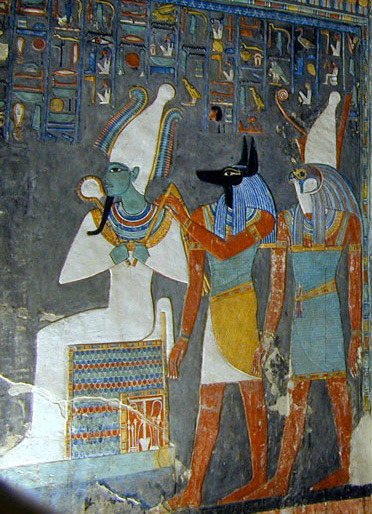
Osiris (Great and Beautiful is He) is the God of the Underworld; its King and Pharaoh ruling over the Duat. He is pictured here on the far left, His skin green and His body in mummiform. This is commonly how He is depicted; as a green-skinned, mummified man.
Son of Nut, the Sky Goddess, and Geb, the Earth God, Osiris was the first King of Egypt in accordance with Kemetic mythology, although there are stories that recount Geb, His father, being King before Him. There are a great deal of myths and stories that surround and involve Osiris, and I suppose it is important to at least skim over them before discussing hard facts about Him, as it gives some reference as to who He is and what the culture surrounding Him is like.
Osiris Myth
After the world was created, the Demiurge (who changes according to myth, and can be Neith, Ra, Amun, Ptah, or others) produces children; in the most popular form of this creation story, it is usually Ra who births the first Gods. They are Shu and Tefnut, Air and Moisture. Shu and Tefnut then form a union and birth two children of Their own: Nut and Geb, Sky and Earth. Nut and Geb were very much in love and refused to separate from each other, which, of course, caused a problem, because if the sky and the earth are eternally in contact, there is no space for anything to live and walk upon the earth. Ra made it so Nut and Geb were forever separated, by having Shu, air, stand atop Geb and hold Nut up as the sky. But Nut was already pregnant. When Ra discovered this, He was enraged, and forbade Nut from ever giving birth on any day of the year.
Nut cried to Djehuty (Thoth), and Thoth devised a plan. He went to Khonsu, God of the Moon, and set up a gamble, saying that every round of the game Senet Khonsu lost, He would have to give Nut some of His moonlight. Khonsu ended up losing so many times that Nut had enough moonlight for five days––five days that weren't in the calendar. This allowed Her to give birth on those five days, and on each day She had a different child; Ausir (Osiris), Wr-Heru (Horus the Elder), Sutekh (Set, Seth), Auset (Isis), and Nebet-Het (Nephthys). Nut and Geb were still forever separated by atmosphere (Shu), but the five Gods were birthed, and Osiris, as the eldest son, became King of the Living World.
As a side note, all Gods do have ancient Egyptian names which are different from Their Greek and now modern names. For convenience's sake, and to avoid confusion, I will use the names They are most known by; Their Greek/modern names. And as another side note, there are a lot of variations on this story. I will be piecing together a lot of different ideas but I will be leaving some things out for the sake of cohesion.
When Osiris came to Egypt, He found the people there to be chaotic and lawless. As King, He instituted laws and spread ma'at, which is truth, justice, harmony, and order. Egypt flourished under His rule and the people were incredibly happy, as all were equal, and with the fertility of the God-King, the crops were always bountiful and food was plenty. He brought not only law and prosperity, but also the right way to worship, and the teachings of agriculture.
Set, God of chaos, confusion, the desert, and of foreigners, and the youngest brother of the Ennead, grew to be quite jealous of His older brother. There are many variations and the most popular variation of this story comes from the end of the New Kingdom (1550-1070 BC), where Set fashions a fabulous coffin in the perfect measurements of Osiris, throws a party, and tells the party-goers that whomever the coffin fits may have the coffin as a gift. When Osiris fits perfectly, Set quickly shuts and bolts the coffin and throws it in the Nile (this version of the myth gives an origin to the idea that people who drowned in the Nile were holy). His coffin drifts downstream and into the Mediterranean, where it washes ashore in Phoenicia, in Byblos. The coffin wedges itself into a growing tamarisk tree, a tree which envelops the coffin. Eventually the tree is cut down and used as a pillar in the palace in Byblos.
Isis, Osiris' wife and sister, searched far and wide for Her husband, and did eventually find Herself in Byblos. The story is quite long and complicated, but in the end She convinced the King to give Her the pillar, and when she returned to Egypt, She hid Osiris in a swampy area of the Nile delta, and bade Her sister, Nephthys, to watch over Him while She went in search of healing herbs. But Seth heard that Osiris was back, and so after interrogating His sister-wife, Nephthys, He found Osiris, cut His body into pieces, and threw them into the Nile.
Isis was horrified at what transpired in Her absence, but She immediately set to work on finding the many pieces of Her husband with the help of Her sister, Nephthys. They managed to find every piece of His body except His phallus, which had been eaten by an oxyrhyncus fish, a fish that was thus forbidden to eat.
With the pieces of Osiris reassembled, and the healing powers of Isis in full power, Osiris was brought back to life, but incomplete. Isis assumed the form of a kite, and from above drew out the seed of Osiris, impregnating Herself with Their child: Horus the Younger. But Osiris, still incomplete, could not properly rule over the land of the living any longer.
This is why He is the ruler of the dead––He was once the king of the living, was killed, and was resurrected, and this is what every ancient Egyptian expected and hoped would happen to them: that they would die and be resurrected. In tombs and mortuary temples you will always see Pharaohs associating themselves with Osiris.
But this long myth I have just told you is not the only version of the story, and in my opinion, it is definitely the longest version of the story. Back in the Old Kingdom and Middle Kingdom there were several different versions; for example, Set's motive is different, ranging from revenge for Osiris kicking him, to revenge for Nephthys (Seth's sister-wife) sleeping with Osiris (which eventually births Anubis). Some texts claim that Seth took on the form of a wild animal, such as a crocodile or a hippopotamus, and killed Osiris that way. In others, Osiris is drowned. In some, the steps surrounding the coffin are skipped, and Osiris is simply cut up, and His pieces scattered around Egypt; a version which explains the many cult centers of Osiris claiming to be a place where Osiris is buried. Osiris' resurrection is also often helped along by other Gods such as Thoth (God of wisdom) and Anubis (God of embalming). In some versions, Set is killed for His actions. In most He is simply defeated and driven from the land, as chaos is necessary for balance and harmony, and thus cannot be killed. And the story that I have told is from the Late Period, recorded by Plutarch, and does not really go along with many Egyptian accounts, which often find Osiris' penis intact.
So that is the Osiris myth with all of its' intricacies and changing rhythms over the course of 4,000 years of Egyptian history. It embodies a huge amount of cultural practices and religious ideas within ancient Egypt, including the idea of truth, harmony, and justice, as well as resurrection, the afterlife, healing, and the workings of the cosmos. I've decided to leave out the later parts involving Osiris' son, Horus, and His fight with Set, for now because this does not directly involve Osiris, and that is our topic for this post.
Tradition, History, and Culture
Worship of Osiris dates back to the Old Kingdom, but the idea of Osiris is likely older than this. Before Osiris was actually Khentiamenti, an agricultural God centered in Abydos, a city which would later become the cult center of Osiris. Khentiamenti means 'Foremost of the Westerners', a title for the ruler of the dead, as the dead resided in the west, where the sun set each day. But Osiris Himself is not found mentioned in any texts or carvings until the 5th Dynasty, where He is depicted as a man wearing a divine wig. Later on He would take on the form we know Him best in––wrapped in a white mummy shroud, wearing an atef crown with ostrich plumes on the sides.
The mummy shroud He is depicted in forever associates Him with death and with the essential story behind Him, which is why I found it so important to start off with the Osiris Myth. This myth is also why He consumed and took the place of Khentiamenti; the name Khentiamenti, Foremost of the Westerners, instead became a title for Osiris as the King of the blessed dead. Another common epithet/name of Osiris is Wennefer (Omnophris), meaning 'The Beautiful One', 'The Beneficent One', and more archaically, 'One Whose Body Did Not Decay'. Among these names He was also called 'The Lord of Love', 'The King of Living', and 'The Eternal Lord'. From the Early Dynastic Period up until the end of the Ptolemaic Dynasty, when Rome conquered Egypt, Osiris was one of the most highly worshipped and revered Gods of Egypt.
Osiris was associated with the Nile river, with its' renewal and life-giving abilities, as one of Osiris' domains and powers was fertility, as well as rebirth. Another of His duties, evidence of which originates in the New Kingdom, was to act as judge of the dead; being King, He sat on the tribunal with the 42 Judges in the famous Weighing of the Heart ceremony. In this ceremony, which took place in the afterlife, the deceased would have to stand before the court and place their soul up for judgement. If it weighed lighter than the feather of Ma'at, representing all justice, truth, and harmony, then the heart acted well in life and would be allowed eternal happiness in the Field of Reeds. If not, the heart, and thus the person, would be consumed by Ammit and committed to nothingness. So Osiris would sit in on this tribunal and judge who entered His kingdom, as it was His domain. In this role, and in His role as King of the Living, as well, He was the embodiment of harmony, law, and justice.
"Most of his appeal was based on his embodiment of the cosmic harmony. The rising Nile was his insignia, and the moon’s constant state of renewal symbolized his bestowal of eternal happiness in the lands beyond the grave. In this capacity he also became the model of human endeavors and virtues..." (The Complete Gods And Goddesses Of Ancient Egypt, p.307)
As I mentioned earlier, Abydos became His cult center, as it was the cult center of the God who came before Him, whose traits He subsumed. It became a very popular burial site, as legends would say that Abydos was where Osiris was truly buried, and the people wanted to be buried as close as possible to Osiris. At one point they believed an ancient tomb there––which was actually the tomb of an Early Dynastic King––to be the tomb of Osiris, which they much revered, and left so many offerings in clay pots that Arabs would later call the site 'Umm el Qa'ab'; Mother of Pots. But this was not the only burial site of Osiris; since many variations of the myth include Set chopping up and dismembering Osiris into many parts, ranging from 14 to 42 different parts. These parts were scattered across Egypt, so many cities and nomes could claim that they had a part of Osiris buried in their domain. For example, far in the south, the island of Bigah claimed to be the burial site of Osiris' left leg, and thus the source for the yearly Nile inundation.
Going back to the Osiris Myth, after Osiris died and became the ruler of the dead, His son took His place as King of the Living: the falcon God, Horus (Heru the Younger). After the brief bout of chaos brought about under Set's rule, Horus took over (after much deliberation from the Gods) and order was restored. Because of this story, Pharaohs would not only associate themselves with Osiris in death, but with Horus in life. Each Pharaoh, as they came to the throne, would become the living embodiment of Horus on earth, the son of Osiris. In this way, Isis was also the mother of every Pharaoh, and their protector. And, to added extent, each Pharaoh would have a personal name, and then a Horus name granted to them when they ascended to the throne.
"It is for this reason that Osiris is so often depicted as a mummified pharaoh; because pharaohs were mummified to resemble Osiris. The image of the great mummified god preceeded the practice of preparing the royal body to look like Osiris... The king's appearance as modeled after Osiris' extended throughout his reign; the famous flail and shepherd's staff, synonymous with Egyptian pharaohs, were first Osiris' symbols as the flail represented the fertility of his land while the crook symbolized the authority of his rule." (Osiris, World History Encyclopedia, Joshua J. Mark)
Osiris can also be represented by a number of physical symbols, such as the crook and flail that He carries in almost all representations of His earthly form. The crook, which is the striped hook He carries, represents power/authority, and is a symbol of the Pharaoh. The flail, which is the instrument in His other hand, represents the fertility of the Nile, and as an extension, the fertility of Osiris Himself. But the crook and flail, though both seen typically as symbols of Pharaonic power, are actually the tools of a shepherd. There is reasonable evidence, thusly, to suggest that the physical origins of the idea of Osiris may not be that of a great King, but of a ruler of a shepherd tribe in the Nile Delta, whose rule was so beneficent that it led to him being worshipped as a God. For Egyptologists, this theory comes from His association with Andjety, a predynastic God-King worshipped in the Delta who also bore the crook and flail as His symbols. This, however, has not and likely cannot be fully proven. But the postulation is still interesting nonetheless!
Osiris' ba soul had its' own culture of worship, a practice of soul-worship that is prevalent in the cults of several other Gods, such as Hathor (HwtHer). In this form, Osiris was known as Banebdjedet, meaning 'The Ba of the Lord of the Djed,' which in English terms means 'The Soul of the Lord of the Pillar of Continuity', as ba means soul, and djed is the symbol for a pillar, which represented the backbone of Osiris. Interestingly, the name Banebdjedet is feminine, as the letter t denotes a feminine word or name in ancient Egyptian; although there are also variations on this name that exclude the t in favour of the alternative, Banebdjed. Banebdjedet, Osiris' ba soul, was worshipped mainly in Mendes, a city in Lower Egypt, in the Delta.
This leads to an interesting point concerning the androgyny of Osiris, a subject I found while researching for this post. Osiris' fertility comes from His castration and then being healed by the mother Goddess, Isis. Not only that, but both men and women identified themselves with Osiris in death. Then the name for His ba personified as another God is feminine, although representations of Banebdjedet are overwhelmingly male. Before anyone attacks me, I am not claiming that Osiris is a genderless God or King––just that He has some traits of androgyny, which I find interesting and love to study in ancient cultures, and I thought it would be good to mention for anyone else similarly interested.
Worship, Festivals, and Cult Activities
When it comes to the practices surrounding Osiris' cult, we actually know a good deal of information regarding the activities of worshippers and priests. Osiris' cult and worship was so widespread and lasted long enough that it could be recorded by the earliest Greek historians, and remained carved in temple walls for thousands of years. Among the most well-known cultic tradition is the Osiris Bed.
The Osiris Bed is rather well documented, as it was an object placed in tombs. It was not a bed for the deceased to lie in, but instead a box made of wood or clay, moulded into the shape of Osiris, in which the fertile Nile soil was placed and seeds were planted. These boxes were then wrapped in white mummy linens, and the seeds sprouted through, representing the resurrection and fertility of Osiris, and the crops that grew each year in cycles. One of the most famous of these beds was found in King Djer's tomb, a King from the Early Dynastic Period; the 2nd King ever of the unified Egypt. Coincidentally (or, perhaps, not so coincidentally) King Djer's tomb was the tomb which pilgrims believed to be Osiris' burial site.
While the Osiris Bed is far from the only practice and tradition of the Osiris cult, it does show the rich cultural practices and symbolism present in His worship. Let's look at some other examples of the practices of Osiris' cult.
Similar to the Osiris bed were Osiris gardens, which were essentially the same concept; fertile soil was planted inside a vessel shaped into the form of Osiris, and seeds were settled within to grow. These beds were tended to during festivals instead of being buried in a tomb.
There were a great many festivals, and each of them quite popular according to their time period, dedicated to the story and symbolism of Osiris. Some festivals started with recounting the mournings of Isis and Nephthys, Osiris' sister-wife and sister, in the form of a drama acted out in a call-and-response format. Another drama acted out for the glory of Osiris was more in the form of an actual fight that anyone could participate in; it was modelled after The Contendings of Horus and Set, which I briefly mentioned as a long and drawn-out argument between Horus and Set over who deserved Osiris' vacant throne after He had died. On this occasion, people would battle out and reenact the events of the story until the side of Horus finally won and victory was achieved. Afterwards, the celebrations commenced in honoring the restoration of order, and the gold-encased shAwyt-nTr (the Holy Statue) of Osiris would be taken out and lavished with offerings. Osiris, in the form of this statue, would be paraded throughout the city of Abydos before being placed in a shrine outside, where He could participate fully in the festivities, and be admired by the commoners who would usually never behold the face of Osiris. This emergence of Osiris from the dark temple's inner sanctuary to the light of the city resembled and represented His resurrection from death into life again. Although this particular festival was celebrated mainly in Osiris cult center of Abydos, it was also celebrated in other cities such as Bubastis in the Delta, Busiris, Memphis, and Thebes, in Upper Egypt.
The Mysteries of Osiris was a series of plays performed annually, and in dramatic, passionate form. It was one of the most popular observances of worshippers, and it told the story that I first told to you––of Osiris' life, His death at the hands of His brother, His resurrection at the hands of His sister-wife, and His ascension into the role we now know Him for. The roles in this reenactments were often taken up by high-ranking officials, and afterwards, the Contendings of Horus and Set would take place, which I just mentioned. These plays would take place over several days.
One festival was called The Fall of the Nile. During this time, the waters of the Nile would recede, and the worshippers of Osiris would go into mourning. One of Osiris' representation on earth was the Nile, and the Nile represented His fertility and life.
Another festival was celebrated on the 19th day of Pakhons, one of the months in the Egyptian calendar, which is roughly equivalent to May in our Gregorian calendar. On this day, the followers of Osiris would go to the river with shrines containing vessels of gold and metal, and would pour water into the Nile, exclaiming, "Osiris is found!" Mud and spices were mixed and moulded into the shape of Osiris, as well, to celebrate His return. Another festival similar to this one was called The Night of the Tear, and took place during modern-day June.
The last festival pertaining to Osiris that I will mention is the Djed pillar festival, held in modern-day January. The Pharaonic court and family would participate, raising djed pillars to welcome Osiris and the harvests that coincided with His return.
One last and interesting tradition that may seem familiar to Christians, at least in a small way, was the baking of bread in the shape of Osiris; bread as the flesh of the God, a sort of predecessor of communion wafers. But in reality the traditions of the Osiris cakes are completely different, and there were several different ways of going about it, depending on which nome you were from. In Dendera, wheat-paste models were made in the shape of each of the 16 dismembered parts of Osirs, and each model was sent out to the town where each respective part of Osiris was found by Isis. In Mendes, figures of Osiris were made of wheat and paste. On the day of the murder, they were placed in a trough, followed by water being added each day for several days. Afterwards, this mixture was kneaded into a dough, put into a mold of Osiris, and buried on the temple grounds.
Conclusion
This has been a somewhat brief glimpse into the cult, history, and traditions surrounding the Great God, The Beautiful Lord Osiris. If I can clarify anything please let me know and I will do my best!
#Osiris#ancient egypt#egyptian mythology#egyptian gods#Kemetic#ancient history#egyptology#Kemeticism
111 notes
·
View notes
Text
its time for!! (after like 3 days)
🥁🥁🥁…
STAR! DOES! FACTS!
you miss me? because i did too!!
todays facts will be…
ANCIENT EGYPTIAN MYTHOLOGY!!
yippee!!
now, let’s get into the facts, shall we?
1. Who were the 9 main gods of Egypt? The nine Ennead gods of Egypt are Atum, Shu, Tefnut, Geb, Nut, Osiris, Isis, Seth, and Nephthys. They are the family of Atum the god of the sun, and are the children, grandchildren and great-grandchildren of the sun god, Ra
2. Since Anubis is the god of death, does that make him evil? Actually it doesn’t! The Egyptian people viewed him as a good, protective deity. Anubis was portrayed with the color black, symbolizing regeneration and the Nile river's fertile soil
3. How many total gods were worshipped? There were well over 2,000 gods and goddesses worshipped in Ancient Egyptian mythology!
4. Most gods had the body of a human and the head of an animal! For example, Lady Bastet with her cat head and Sekhmet with her lioness head.
5. Who is the most well known God? That title goes to Amun-Ra, the sun god and also the god of creation. Amun-Ra is also the protector of the pharaoh, who is often depicted as an embodiment of Amun-Ra
6. Are there any lesser known gods? Yes! One of the more lesser known ones are Geb, who is the personification of the earth, god of healing colds, fevers, and scorpion stings. It is said that his laughter supposedly caused earthquakes. 
that is all folks for…
STAR! DOES! FACTS!
tomorrows facts will be about
ROMAN MYTHOLOGY !!
one of my personal favorites
see you all tomorrow!
#deity#deity worship#pagan wicca#paganblr#ancient egypt#ancient egyptian#gods#goddess#paganism#pagan#pagan community#amun ra#anubis#god anubis#star does facts!#fun facts#facts
71 notes
·
View notes
Photo


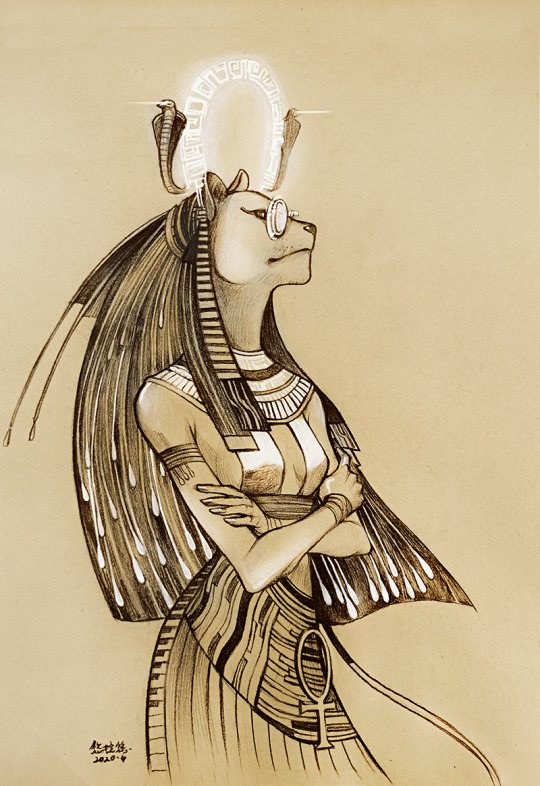


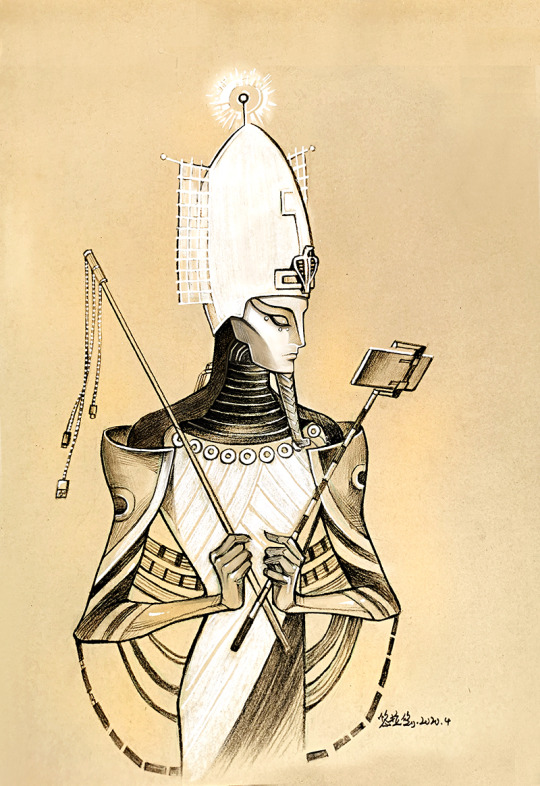
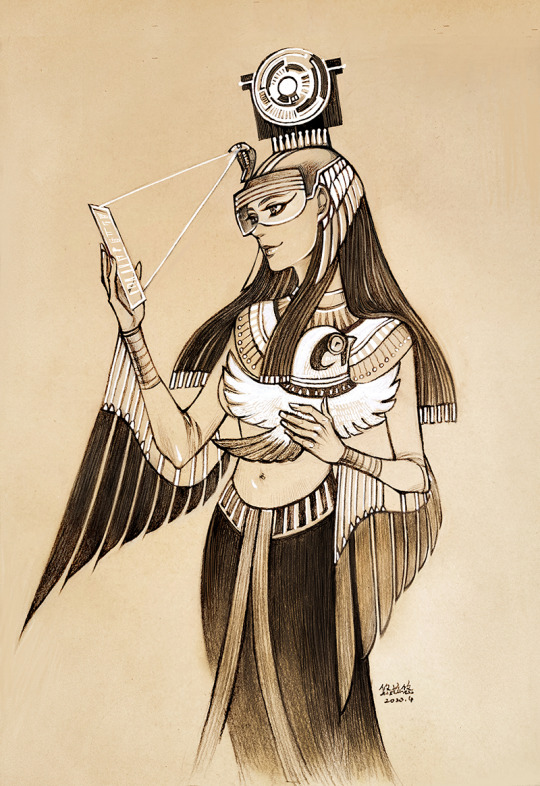



Cyber punk Egyptian gods-Ennead
Ra,Shu,Tefnut,Geb,Nut,Osiris,Seth,Isis,Nepthys
616 notes
·
View notes
Text
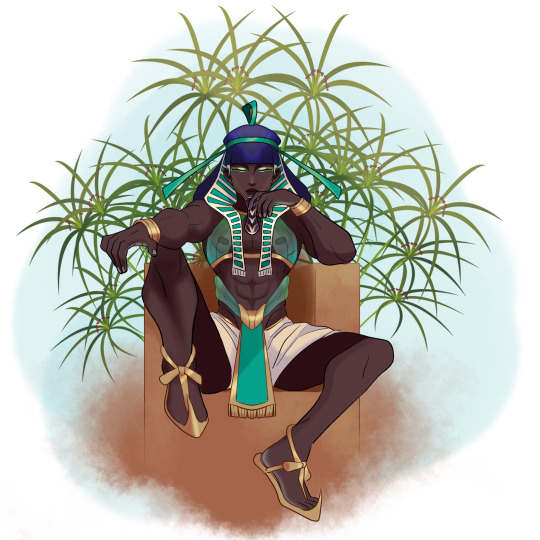

Geb, God of Earth is the first God ever aligned with such element, creating the path of fertility - to which he belongs - and that of the Desert as well. Despite his gentle nature, his rebellious attitude led him to commit many wrongdoings in the past which had his family intervening more than once against him. Due to the restriction order he was given for his crimes by the laws of Ma'at, he shows himself only if summoned by the court of the Ennead, spending the rest of his time giving his blessings to his sons and his beloved Kemet from underground where he has been confined.
63 notes
·
View notes
Text
Dua Shu, Prince of the Ennead!
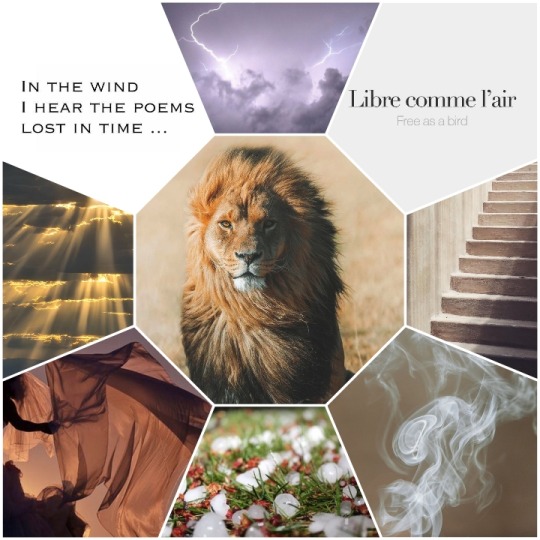
"Shu is the one that Atum formed,
His mantle is the air of life.
A cry for Him came from Atum's mouth,
The air opened in his ways.
He lights up the sky after the darkness,
His pleasant color is the breath of Atum.
Storm clouds in the sky are its efflux,
Hail and twilight are his sweat.
The length of the sky is his step,
The breadth of the land are his settlements.
All living things on Geb's back,
By order of Atum, Shu governs them;
His life is in his nostrils,
He guides the breath into their throats."
10 notes
·
View notes
Text
Deep dives into folklore: Egyptian mythology

Egyptian mythology is a rich and complex tapestry that weaves together a diverse pantheon of gods, goddesses, and mythical beings, providing insights into the beliefs and cosmology of ancient Egypt. The mythology of ancient Egypt spans thousands of years, evolving and adapting over different periods of the civilization's history. Here's a deep dive into key aspects of Egyptian mythology:
Creation Mythology:
1. Atum and the Ennead:
Atum, the primordial god, is often associated with the sunset and creation. According to some myths, Atum emerged from the chaotic waters of Nun and created himself.
Atum then produced the Ennead, a group of nine deities, including Shu (air) and Tefnut (moisture), who gave birth to Geb (earth) and Nut (sky).
2. Geb and Nut:
Geb and Nut, the children of Shu and Tefnut, were initially inseparable, but Shu raised Nut above him, creating space between them—representing the sky—and allowing life to flourish on Earth.
3. Osiris, Isis, Set, and Nephthys:
Osiris, the god of the afterlife and rebirth, ruled Egypt with his sister-wife, Isis. Set, another sibling, grew jealous and murdered Osiris.
Isis, the devoted wife, gathered Osiris's body parts, resurrecting him for a brief period to conceive their son, Horus.
The conflict between Horus and Set symbolizes the struggle between order and chaos.
Pantheon:
1. Ra:
Ra, the sun god, was a central figure in Egyptian mythology. He traveled through the sky during the day and navigated the underworld at night.
Ra's journey through the underworld and rebirth at dawn mirrors the cycle of the sun.
2. Horus:
Horus, often depicted with a falcon head, was associated with kingship and protection. The Pharaohs were believed to be the earthly embodiment of Horus.
The Eye of Horus symbolizes protection, healing, and power.
3. Thoth:
Thoth, the ibis-headed god, was the scribe of the gods and the inventor of writing. He played a crucial role in the judgment of the deceased in the afterlife.
4. Anubis:
Anubis, the jackal-headed god, presided over mummification and guided souls through the afterlife. He weighed the hearts of the deceased against the feather of Ma'at during the judgment in the Hall of Ma'at.
Afterlife and the Duat:
1. Duat:
The Duat was the realm of the dead, a mysterious and perilous place that the deceased had to navigate to reach the afterlife.
2. Ma'at:
Ma'at, the goddess of truth, justice, and cosmic order, played a crucial role in the afterlife judgment. The heart of the deceased was weighed against the feather of Ma'at.
3. Osiris and the Afterlife:
Osiris became the ruler of the afterlife, offering the possibility of eternal life to the deceased who passed the judgment in the Hall of Ma'at.
Rituals and Beliefs:
1. Mummification:
The process of mummification was a vital ritual to preserve the body for the afterlife. Organs were removed, and the body was treated with natron before being wrapped in linen.
2. Book of the Dead:
The Book of the Dead was a collection of spells and rituals designed to guide the deceased through the afterlife successfully.
3. Temples and Cults:
Temples were dedicated to specific gods, and cults practiced rituals and ceremonies to honor and appease the deities.
Egyptian mythology reflects the Egyptians' deep connection to the natural world, their preoccupation with the cyclical nature of life and death, and their profound religious beliefs. It served as a foundation for their societal norms, rituals, and the concept of an afterlife. The stories of gods and goddesses, creation myths, and the pursuit of balance and order continue to captivate and inspire curiosity about this ancient civilization's spiritual beliefs.
Taglist (reblog or reply to be added):
@axl-ul @crow-flower @thoughts-fromthevoid @alderwoodbooks @harleyacoincidence @tuberosumtater @sonic-spade @theonlygardenia @holymzogynybatman @nulliel-tres
#writeblr#writers of tumblr#writing#bookish#booklr#fantasy books#creative writing#book blog#ya fantasy books#ya books#Deep dives into folklore#folklore#egyptian mythology#egypt#ancient egypt#mythology
22 notes
·
View notes
Photo

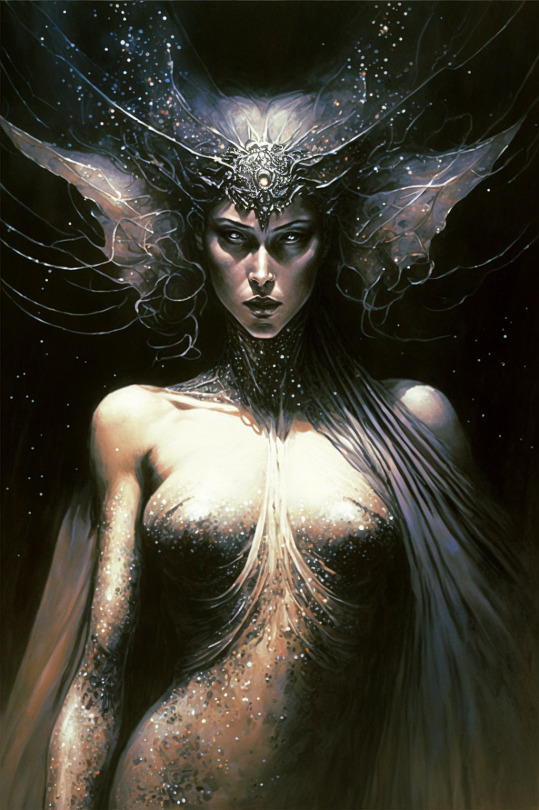
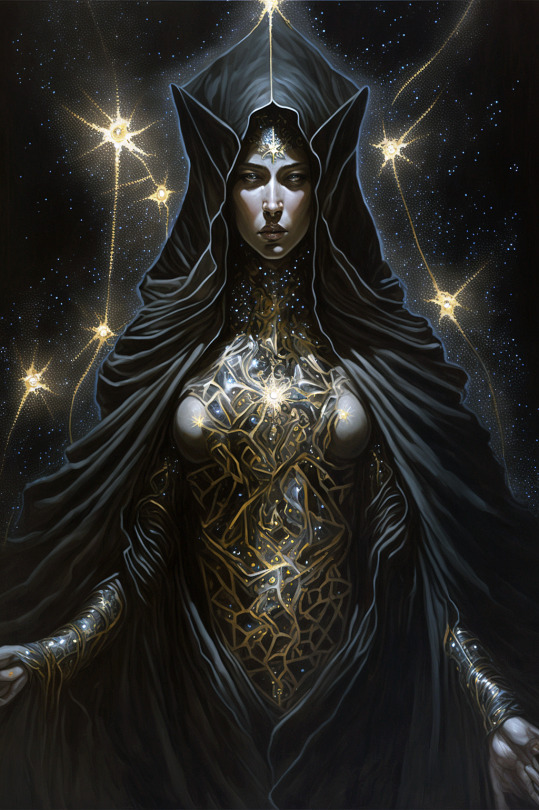
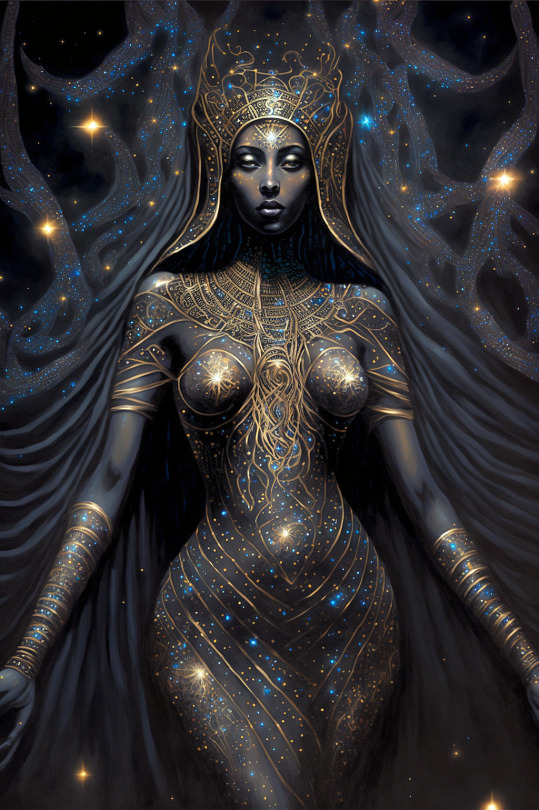

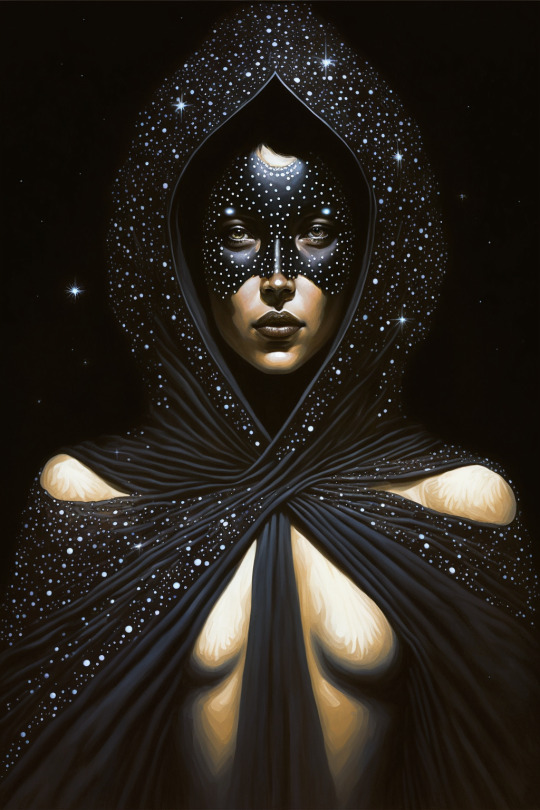
Shu, in Egyptian religion, god of the air and supporter of the sky, created by Atum by his own power, without the aid of a woman. Shu and his sister and companion, Tefnut (goddess of moisture), were the first couple of the group of nine gods called the Ennead of Heliopolis. Of their union were born Geb, the earth god, and Nut, the goddess of the sky. Shu was portrayed in human form with the hieroglyph of his name, an ostrich feather, on his head. He was often represented separating Geb and Nut, supporting with uplifted arms the body of Nut arched above him. In some Middle Kingdom texts Shu was given the status of a primeval creator god. Later he was frequently termed the “Son of Re” (the sun god), and he was also identified with Onuris, a warrior god, thus acquiring martial associations.
Shu Separating Sibu and Nuit
Talon Abraxas
122 notes
·
View notes
Text
I really want that one Pyramid Texts spell that makes it seem like Set and Neith might be consorts to have been on purpose and not a mistake, just because Neith is Ra’s mother and Ra is basically Set’s boss, and I think that would’ve been pretty funny.
(Uhh context: There’s this one Pyramid Texts spell (in the pyramid of Pepi I, I believe?) that lists the 9 ennead gods in their respective couples, like Shu and Tefnut, Geb and Nut, and so on, but then instead of “Set and Nephthys” it says “Set and Neith.” And maybe that was on purpose or maybe it was an accident because the names Nt and Nbt-ḥwt are kind of similar. As far as I’m aware that’s the only evidence we have to suggest them being a couple.)
#egyptian mythology#egyptian gods#Neith#Set#Ra#The pyramid texts#What makes this even better is that Neith sides against Set in the Contendings of Horus and Set#Set can get his boss’s mom to appear as his partner in a ritualistic context but he can’t get her to support his claim as king#ancient egypt stuff#ava has thoughts#Sutekh#Nit
20 notes
·
View notes
Photo
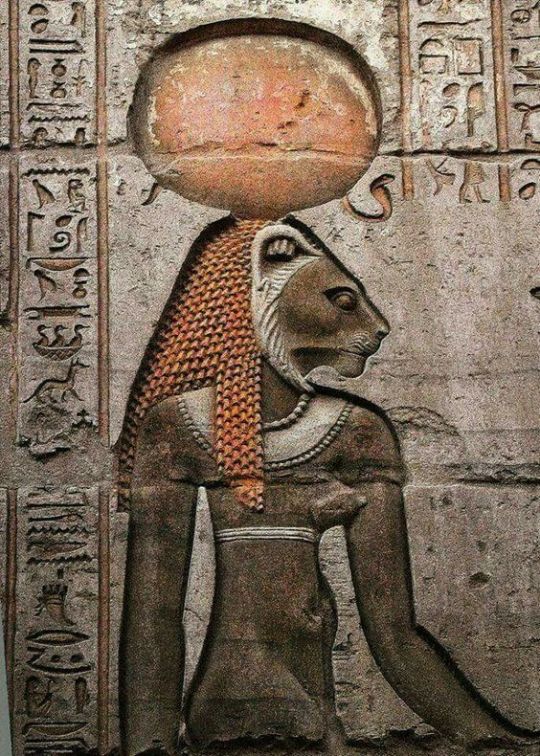


The Goddess Tefnut
wall relief - Kom Ombo Temple - Ptolemaic dynasty - 180–47 BCE
The relief is often erroneously identified as Sekhmet, a more well-known lion-headed goddess.
In ancient Egyptian religion and mythology, Tefnut (also spelled Tefenet, from the hieroglyphic phonograms t-f-n-t) was the goddess of moisture and rainfall. Her name translates to something like 'She of Moisture'. Tefnut was worshipped as a goddess of creation and sometimes associated with fertility and life-giving powers, who shared the space between Heaven and Earth with her twin brother and air god, Shu. She is depicted with a lion’s head crowned with the solar disk and uraeus serpent.
Tefnut is the daughter of the all-powerful sun deity, Atum (Atem), also called Ra, or sometimes Atum-Ra. Atum Ra was the creator is the cosmos in ancient Egyptian religion and is responsible for creating air and water: Shu and Tefnut. Shu and Tefnut are parents to Nut, the sky goddess, and to Geb, the earth god. Geb and Nut then created their own children: Osiris, Isis, Set, and Nephthys. These nine deities (Atum-Ra, Shu, Tefnut, Nut, Geb, Osiris, Isis, Set, and Nephthys) form a group called the Great Ennead. The Ennead is a group of creation deities who were worshipped in Ancient Egypt, especially Heliopolis.
65 notes
·
View notes
Text

Geb god of the earth, member of the Ennead of Heliopolis and father of snakes in the ancient Egyptian religion
18 notes
·
View notes